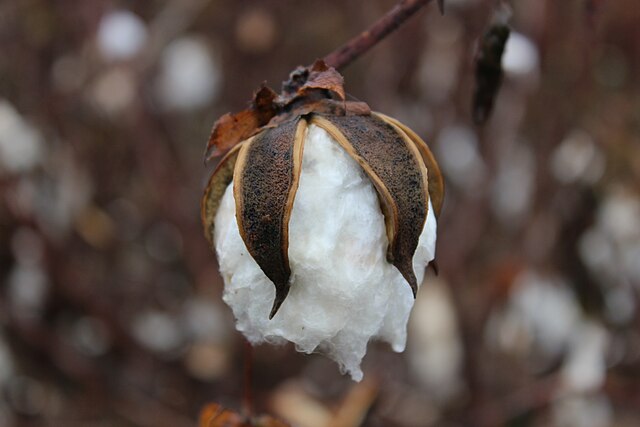The government of Indian Punjab is revamping cotton cultivation to at least half the acreage it once boasted before 2019. This at a time when India’s cotton prices to the major market of the United States are low amid uptick exports.
According to Punjab’s agriculture minister Gurmet Singh Khudian on April 19, 2025, the 2025-26 target is 125,000 hectares (ha).
Currently, the cotton area in this northwest Indian state is at 97,000 ha, necessitating 28,000 more to make the target.
The cultivated area plummeted from 265,000 ha in the 2018-19 period due to bollworm disease and weather aggrevation.
Drought and disease combination had likewise dealt a blow to a subsidy program that offered bacteria-resistant BT hybrid seeds. But along with the ongoing acreage expansion intent, the government is reviving the program at a subsidy rate of 33%.
Farmers with over 5 acres of land under cotton will share a subsidy kitty of 200 million rupees ($2.34 million).
Subsidy applicants will get 10 sachets of seeds, each weighing 475 grams or equal to five sowed acres.
Saving Precious Water
The program will also help diversify crops and balance the predominant water-intensive rice cultivation in southwest Punjab.
According to Khudian, growing cotton through the subsidy program will be a “viable alternative to the water-guzzling paddy crop.”
Indeed, rice claims 3.1 million ha of land in Punjab each kharif (autumn season). This extensive cultivation in turn leads to ~1 meter in groundwater depreciation, annually.
Cotton in its part performs well in the southwestern districts of Punjab and requires far less water than paddy.
Since farmers sow it from April to mid-May just ahead of the Indian Summer, canal water availability is key.
For 2025, the Punjab Agricultural Univesity is recommending planting to be over by May 15 to bridge canal water availability.
Sowing usually takes place immediately after the Rabi (spring) harvest, during which farmers prepare the same fields for cotton.
Back in February 2025 the director of agriculture in Punjab predicted this year’s sowing to cover 150,000 hectares.
Whichever the eventual acreage, farmers anticipate better prices than they began 2025 with at below the minimum selling price (MSP).
So, a plan to revamp the dwindling Punjab cotton sector is on course even as pre-summer planting starts. To learn more about the sector’s past glory, read on the statistics section below.
Punjab Cotton Statistics
India contributes around 21% of the annual global cotton production courtesy of 6 million growers, as of 2022. The output of each state is instrumental to this round figure, one being Punjab to the northwest of the country. But unlike Punjab on the Pakistan side which produces 70% of the country’s cotton, the Indian counterpart ranks only 7th nationwide.
How is the historical production of Punjabi cotton?
Punjab accounts for between 110,000 tonnes (2021-22) and 200,000 tonnes (2017-18) of cotton bails per year. Production in the 2016-2022 timeline generally averaged 150,000 tonnes, annually. In comparison, two western states namely Gujarat and Maharashtra peak output at 1.51 million and 1.48 million tonnes, respectively (2019-20).
Which cotton types does Punjab produce?
Just like India’s cotton comprises 60% long staple varieties of at least 30 mm long, so does Punjab’s. The state’s main varieties include J-34, a medium long staple of at least 25 mm and other short-, medium- and long-staple types. An advanced type is BT (Bacillus thuringiensis), which has toxins that grow with it to naturally fight bollworm and other bacteria. Due to the popularity of BT hybrids, all other varieties including Desi (traditional) now fall under general term “non-Bt.”
How has cultivated area under cotton plummeted in Punjab?
The table below on Punjab’s cotton acreage by year, courtesy of Gleaf and the Times of India, offer graphical insight:
| Market Year | Hectares |
| 2025-26 | 125,000 [target] |
| 2024-25 | 97,000 |
| 2023-24 | 173,000 |
| 2022-23 | 248,000 |
| 2021-22 | 252,000 |
